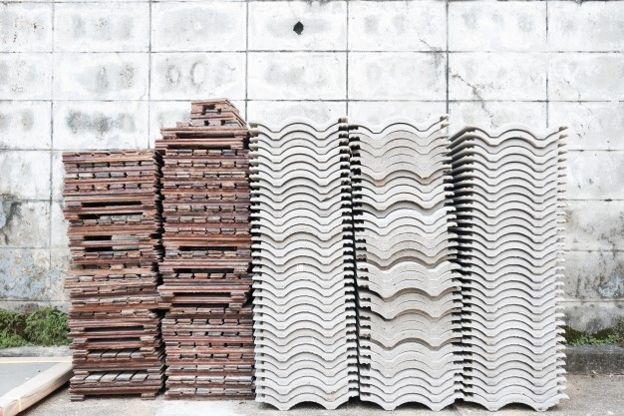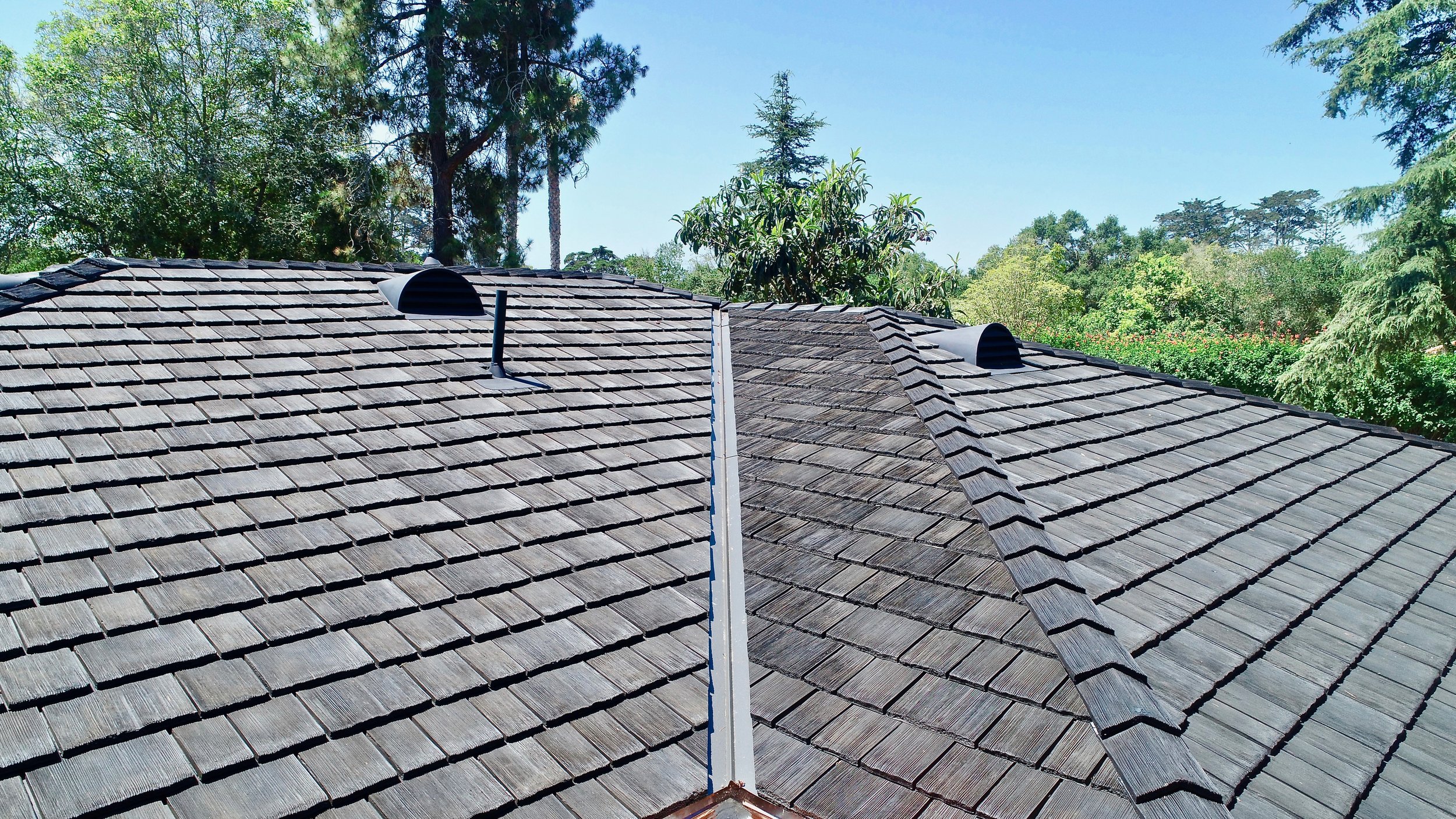7 Problems with Concrete Roof Tiles & a Better Alternative
There is a chance you have seen many homes with concrete roof tiles. And while they are commonplace and popular in terms of roofing options, they are not necessarily the best option to go with. Here is what you need to know about concrete roofing tiles, some of the common concrete roof tile problems you may encounter, and a solution that eliminates all of the potential issues.
Why People Use Concrete Roof Tiles
Concrete tiles became more commonplace on homes during the aftermath of World War II, when traditional roofing materials were scarce and concrete was readily available. But, they have remained popular for a few reasons: the strength of concrete, the unique look that the tiles provide, and even the fact that they do not attract as much heat as other options like asphalt shingles.
While these are all great features, that is not to say that concrete roof tiles are not without their flaws. In fact, here are 6 of the common concrete roof tile problems that you should be aware of before you decide to install a concrete tile roof on your own home.
6 Concrete Roof Tile Problems
1. The Weight
One of the first problems that come with concrete roof tiles is their sheer weight. When compared to other roofing materials like asphalt, clay, composite, and metal, concrete roof tiles are significantly heavier. Concrete tiles can weigh anywhere from 820 to 1,1100 pounds per 100 square feet, which is all weight that goes on top of a home.
This means that any house with concrete tile roofing needs to have enough structural support to be able to handle it. Otherwise, the sheer weight of the concrete roofing tiles can be too much for the home to handle and cause structural integrity issues. In fact, in some cases, a building may not be allowed to use concrete roof tiles due to the sheer weight alone.
2. Physical Appearance
Like with virtually any type of roofing material, concrete roof tiles come in a wide variety of styles and designs. This gives homeowners the freedom to choose roofing tiles for any kind of home style they may have in mind.
However, like with most materials, these patterns, paints, and design can begin to fade over time, especially when exposed to harsh weather conditions. Things like high heat, heavy rain, and strong winds can also speed up the deterioration of the tiles, leaving you with a dull, unattractive roof. Of course, the roof can be repainted, but that brings other concrete roof tile problems: the added maintenance and additional costs.
3. The Level of Maintenance
Concrete roof tiles also require a certain level of maintenance. While they offer Class A Fire Ratings, they can still take a beating from impacts, particularly when it comes to hail or fallen branches. As a result, some of the individual concrete tiles may need replacing, which can be challenging to do due to color differences caused by tile fading and also tile weight issues.
Because concrete is a porous material, it absorbs water quickly, which can lead to the formation of things like mold and mildew, which are harmful to the roof and also physically unattractive. As a result, to prevent this water absorption, concrete roof tiles require a special sealant that will prevent moisture from seeping through.
4. Water Absorption
When it comes to construction materials on a home, you ideally want to avoid porous materials. These materials, like concrete roof tiles, have a tendency to absorb moisture when not properly treated and weatherproofed. Without these sealants or other forms of treatment, rainwater, moisture from fall foliage, and even air moisture can all seep into the material. This leads to issues like mold, mildew, and possibly even the deterioration of the concrete tiles.
Beyond this, however, water absorption can make concrete roofing tiles that are already heavy even heavier. As a result, more pressure is put on the overall structure of the home and can lead to serious structural issues.
5. Underlayment Requires Replacing
While concrete roofing tiles are a fairly durable roofing option, the underlayment is not. On average, your concrete roofing tiles will last up to 50 years, while the underlayment will only last about 20 years.
This means you will have to go through replacing this layer every-so-often, which adds to the maintenance and cost of concrete tile roofing. The process of replacing the underlayment of your roof can also be rather tedious and time-consuming and keep you from working on other projects in and around your home.
6. Cost
Tying in with all the concrete roof tiles problems mentioned above is the overall cost. Although concrete roof tiles themselves are not very expensive, there are still several things that can add to the cost of concrete roofing tiles over time.
First off, beyond buying the product and hiring a roofing contractor, you may need to do additional work to your home for it to be able to support a concrete tile roof physically. Then, you may eventually choose to repaint them once they have faded or replace any that have become broken or cracked.
Of course, there is also the replacing of the underlayment material every 20 years, which is, of course, another additional cost. If structural improvements need to be made to handle the weight, that’s yet another factor that will increase the cost of concrete roofing.
7. Fragility
One often overlooked downside to concrete roofing tiles is their fragility. Lack of durability probably isn't the first thing that comes to mind when you think of concrete roofing, but it can be a major issue. In colder climates especially, concrete tends to become more brittle and susceptible to impact damage during cold weather.
The freeze/thaw cycle can also take a toll on them if they aren’t properly sealed on a regular basis. Considering the fact that concrete roofing is a more difficult to install and costly material, this makes their fragility in cold weather that much more of a downside.
A Better Alternative to Concrete Tiles
An excellent alternative to concrete tile roofing is composite roofing, which is made from an incredibly lightweight and durable polyurethane material. One brand, in particular, to consider turning to is CeDUR, who is known for their beautiful, synthetic roofing shakes that are modeled after real wood shakes.
Why Synthetic Roofing Shakes?
Like concrete roofing tiles, composite roofing shakes like CeDUR’s offer the highest Class A Fire Rating, which is certified by Underwriters Laboratories (UL) and does not need any additional fire-resistant underlayment. In addition, they also have a Class 4 UL Impact Rating, making them highly resistant to hail and falling debris. These roofing shakes can also withstand up to 115 mph wind speeds, so they will not be torn off during severe winds.
CeDUR’s shakes are also incredibly lightweight compared to concrete tiles, weighing in at around 170 pounds per square. Beyond that, another excellent benefit to these synthetic shakes is the fact that they are non-porous, so there is no concern about water absorption, and therefore, no worry about things like mold and mildew.
Finally, CeDUR’s products are virtually maintenance-free. These roofing shakes will not chip, fade, warp, or break in any way, and will never need replacing or repainting. This means that the only maintenance your roof would require is a simple hosing off every now and then, to remove dust and weather debris.
CeDUR Shake Offers the Perfect Alternative to Concrete Roof Tiles
While concrete roofing tiles sound like a nice, durable roofing option, there are many concrete roof tile problems to be aware of. Instead of getting a roof that may end up giving you issues or requires more maintenance than you may be willing to give, consider synthetic roofing shakes.
These virtually maintenance free roofing options are beautiful, lightweight, highly durable, and can also be affordable. When looking for a new roof, CeDUR roofing shakes are a great choice to consider. They are durable, affordable, eco-friendly and will look great on the roof of any home.
With virtually no maintenance requirements, an expected lifespan of over 50 years, and a variety of stylish options like Golden Cedar, Live Oak, Walden, and Shiloh, CeDUR Shake has roofing options that are perfect for any homeowner.
Want to learn more about CeDUR?
Contact us today to discuss your project with a CeDUR team member!




